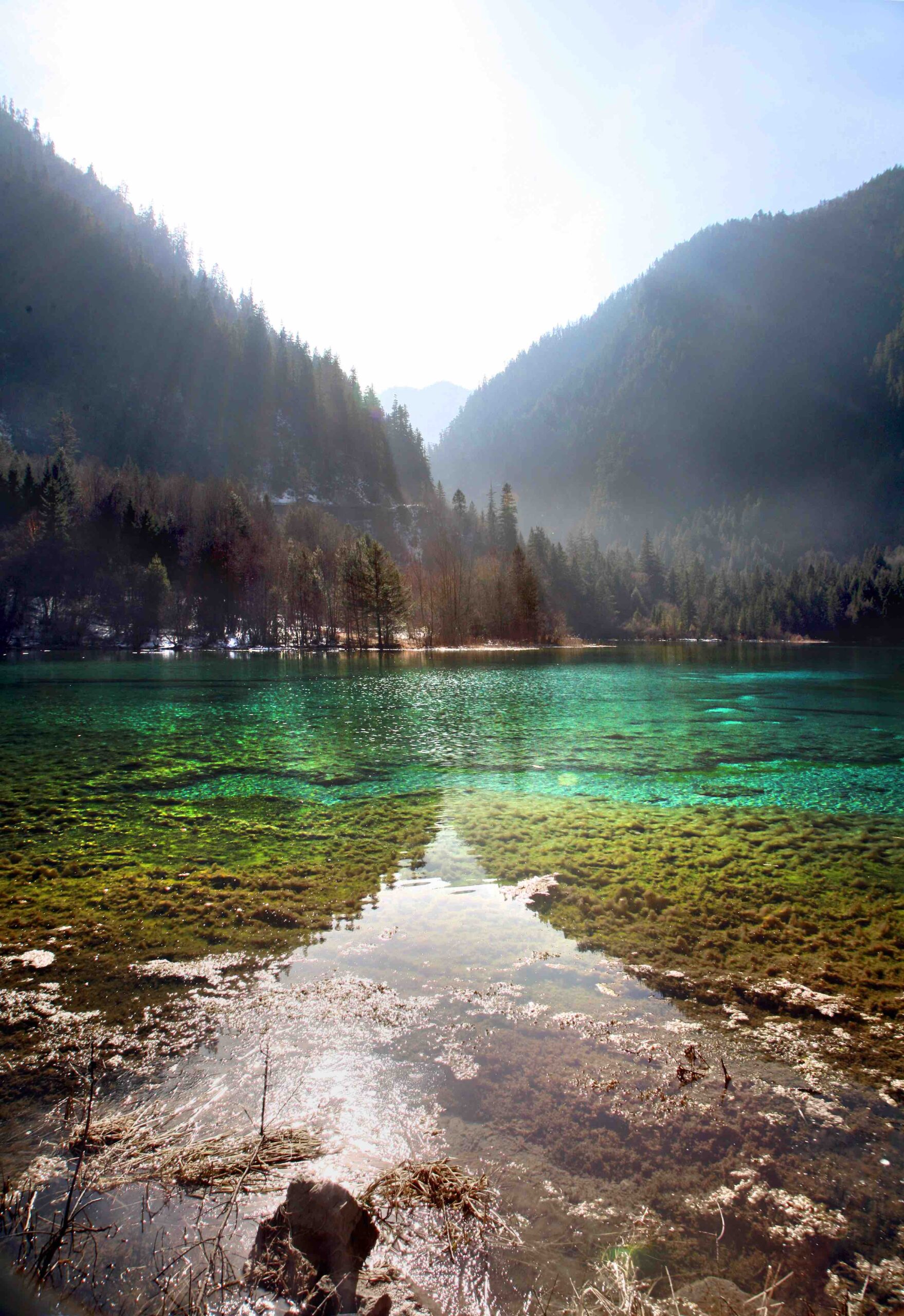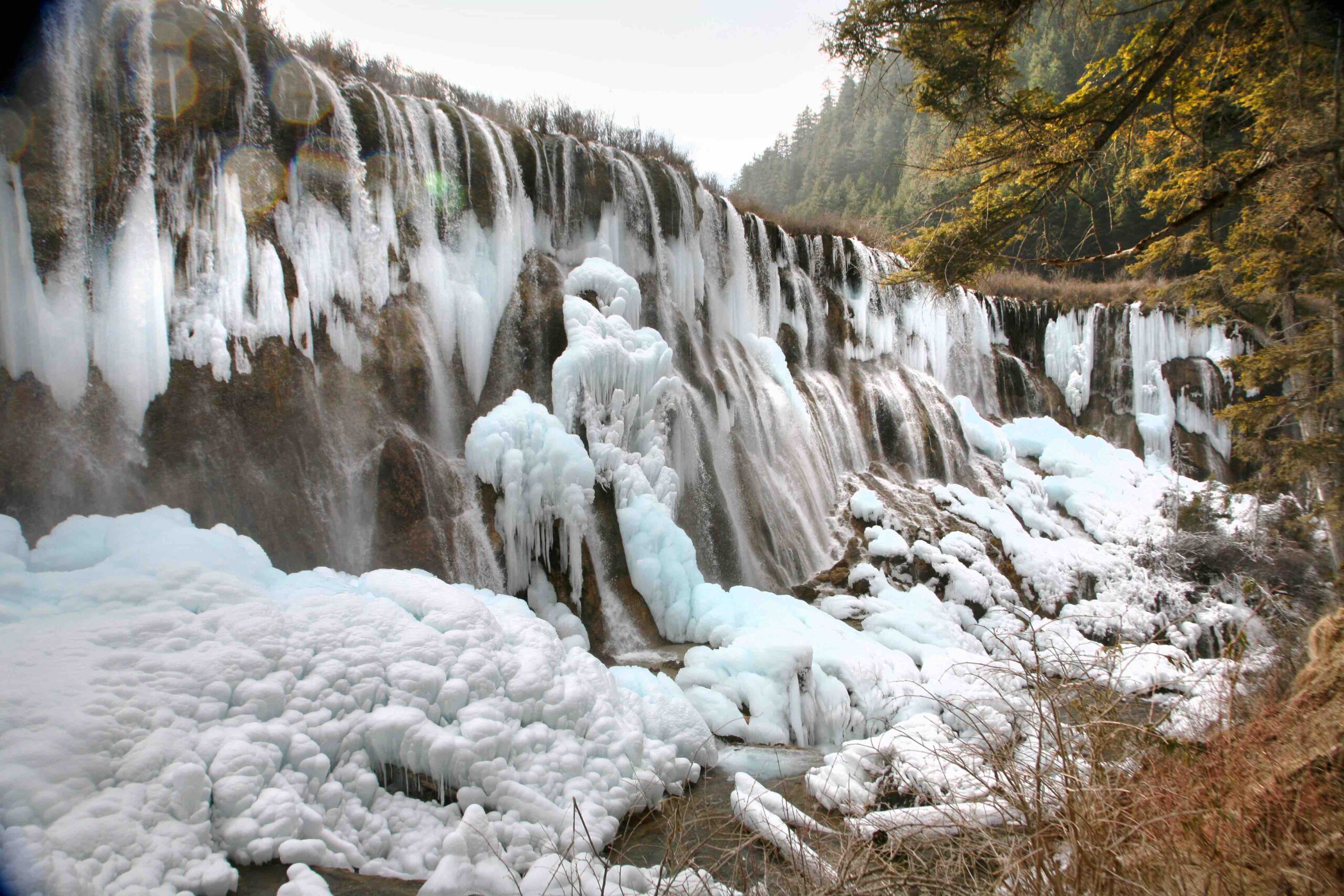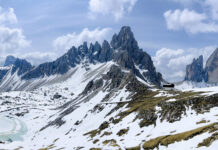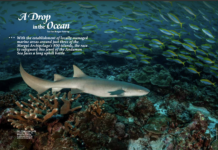The travertine mirrors of Min Shan
Text by YD Bar-Ness & Photos by Lunita S V Mendoza
To encounter a calm, clear pool of water in the steep and jagged mountains is to find a rare moment of peace in a challenging world. The surface of a still mountain lake is one of the few straight lines visible in the natural world, and a lakeshore is brightly lit and open to the sky, a stark contrast to dark forests and crowded cities.
In Jiuzhaigou Valley, this tranquillity can be found in a stunning array of colours. Here, a chain of rainbow lakes trickle down a valley, fantastically clear and surreally tinted. At Jiuzhaigou, the water is bright coralline blue, striking green, and serene purple, spilling over a sequence of strangely formed waterfalls.

Surrounded by the snow-capped peaks of the Min Shan mountain range, the valley is a revelation of colour and form. Jiuzhaigou National Park conserves and interprets this strange geographical feature. One hundred and fifty kilometres northwest of Chengdu, the capital of Sichuan Province, Jiuzhaigou is becoming increasingly connected by road and aeroplane to the more populous regions of Asia. The park identifies itself as the premiere national park of China and has been recognised internationally as a global treasure by being listed on the UNESCO World Heritage List.
The landscape
A lake is simply a resting place for water on its inevitable journey downwards. An obstacle – a narrowing of a valley, avalanche deposits, a fallen tree, a dam – slows the water, which collects above it. Mountain lakes can come in a variety of shapes, sizes and colours, and different degrees of clarity. Some lakes are glacially carved and have pooled in a bowl scoured out by ice. Others are artificial and are above once-dry valleys that have been submerged for hydroelectricity production.

The pools of Jiuzhaigou have a more remarkable origin: the water flowing down the valley carries its own obstacle within it. In a process mirroring the delicate formations of a subterranean limestone cave, the calcium-rich water deposits calciferous rocks on the surfaces it flows over. There is a biological link, as well: the chemical capacity of the water to carry calcium is reduced by the presence of green algae and plants. This accumulation of rocks is known as travertine, and over time, it can collect on other obstacles perpendicular to the water flow, solidifying into a natural dam.
Travertine is often associated with hot springs, but can also be found in cold-water springs. Jiuzhaigou Valley is downstream of a water source that passes through a region of limestone and ancient marine deposits of coral and seashell now uplifted high into the mountains of inland Asia. At Jiuzhaigou, the lakes are found in a linear chain, where the flow of water is constricted by travertine deposits at relatively regular intervals down the valley.

In Jiuzhaigou, travertine is deposited at approximately one millimetre each decade. The water spills over a travertine dam as a broad waterfall, and as it deposits yet more travertine, a series of flat terraces is formed. At these dams, one can also find stalactites and stalagmites who practise Ruism, a local polytheistic faith; and the Hui people, adherents of Islam widespread throughout China. Jiuzhaigou National Park has been recently linked with a nearby airport to the rest of China, with regular flights arriving directly from Beijing, Chengdu and Chongqing. Like every other place on Earth, Jiuzhaigou is now closer and more accessible for explorers of all origins.
The park
The Chinese Government designated Jiuzhaigou Valley a national park in 1984, having protected it as a nature reserve from forest clearing since 1978. In 1992, UNESCO determined that the valley met the criteria for World Heritage listing.
For the rest of this article (Asian Geographic No.96 Issue 3 /2013 ) and other stories, check out our past issues here or download a digital copy here
The 25th anniversary of the largest and longest running dive show, Asia Dive Expo (ADEX) is set to occur on the 11-14th April 2019. Centred on the theme – Plastic free Future, ADEX is more than just a dive show with its commitment to the environment. Among an exciting lineup of programs, attendees can look forward to a Future Forward Series of Panel Discussion on the Single-Use Plastic Conundrum in Asia, on 13th April.
So join us at the event, get inspired and for all you know, you might just liberate the inner diver in you! More details of the event here.












